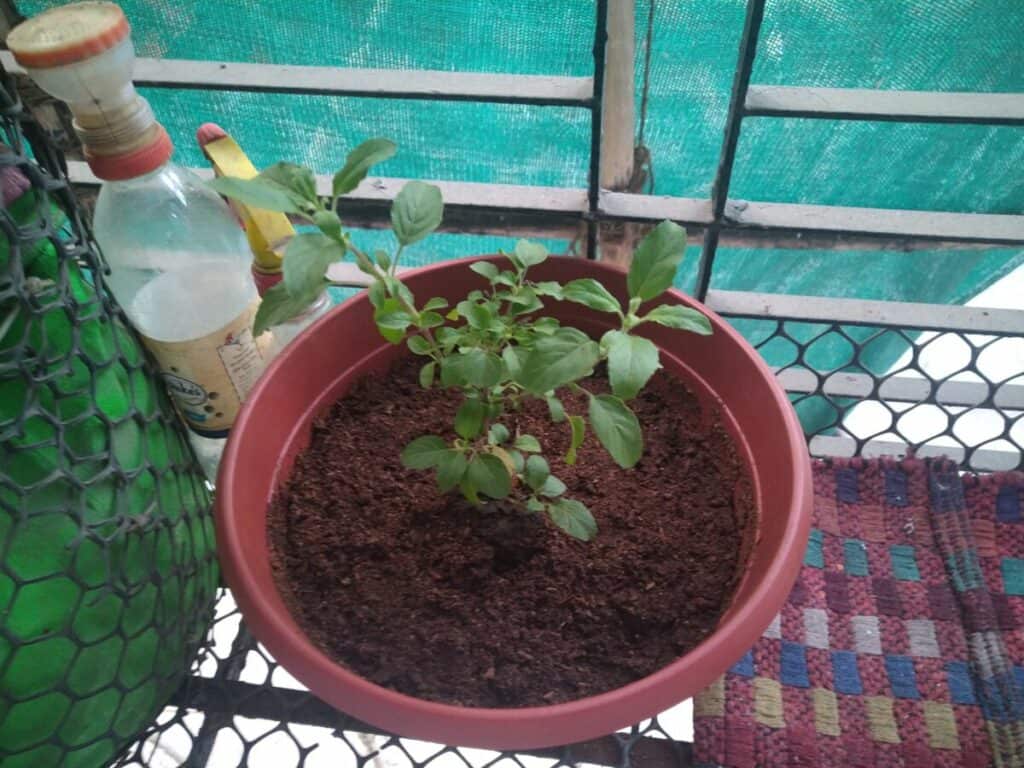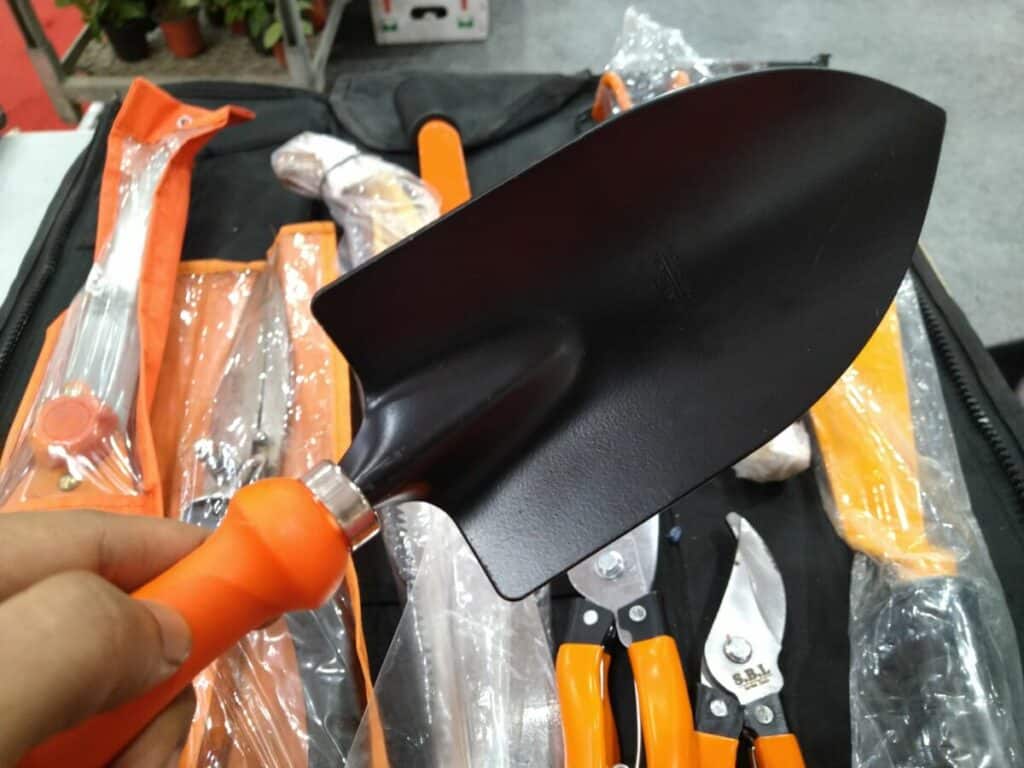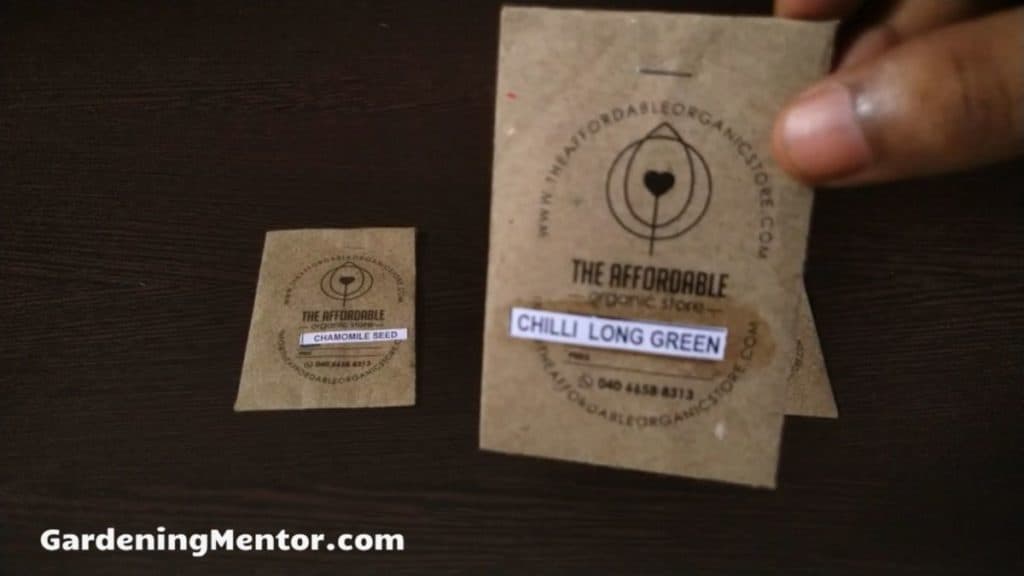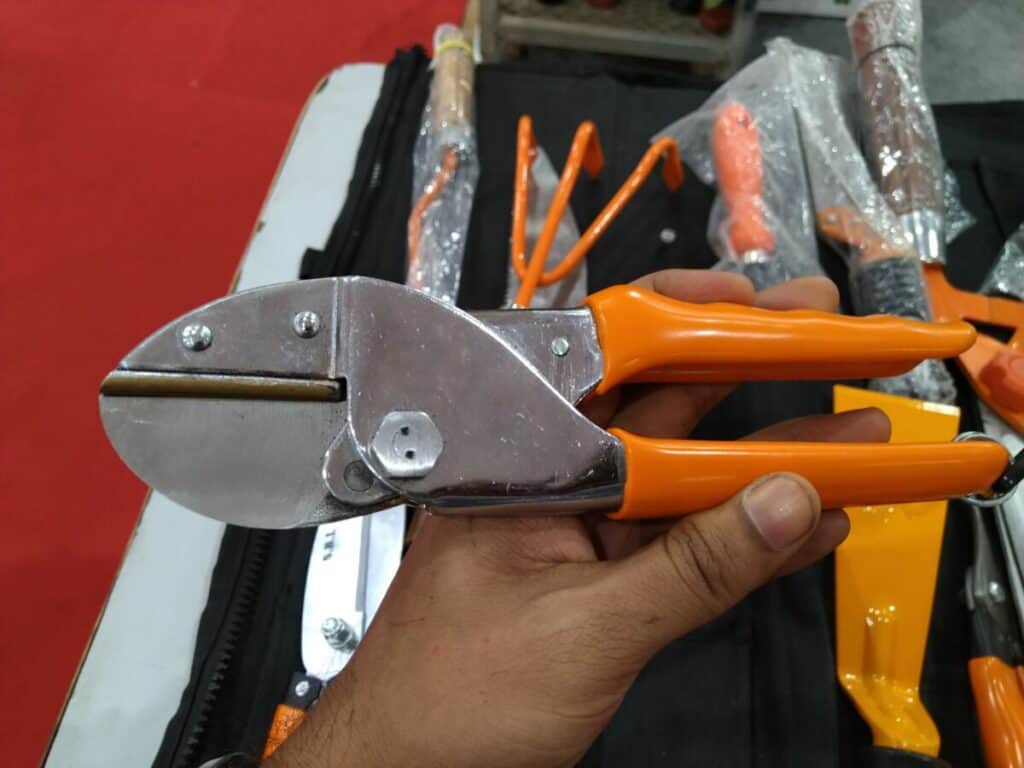It’s your dream.
Having your own garden is something your soul craves for.
Maybe you want to grow your own food. Maybe you want a pretty looking flower garden. Or maybe you want to grow some culinary herbs.
But there’s a problem.
You don’t know where to start.
Gardening takes some effort like most wonderful things in life. But it’s worth the effort.
Let’s look at 25 best gardening tips that can help a beginner get started on the right path of growing their garden.
1. Get to know your hardiness zone
Hardiness means the level of cold that a particular plant can sustain. Plants that are hardy can survive in a harsh climate.
The hardiness zone tells you how cold the climate in your region can get. This is based on the US hardiness zone map. And you can find it out using the hardiness zone finder.
When you’re buying seeds or plants, look for the hardiness zone they’re suitable for. This will help you know the limits and possibilities of plants you can grow.
The plants suitable for your hardiness zone will grow the best with least maintenance.
2. Make a plan for your garden
It’s good to have a plan before starting your garden. Figure out the type of garden you want to grow.
Do you want to grow vegetables, flowers, herbs, or maybe all of them? Do you want to grow in containers, raised beds, or a vertical garden?
What kinds of plants would you prefer? Annual? Perennial?
It’s best to start small and not overwhelm yourself. Plant to grow a few plants in the first season as you can increase them later. Know which plants you want to grow.
Understand how tall and wide they can grow. You’ll need to plan tall plants at the back while small plants are in the front. This helps them get the right sunlight without getting blocked.
If your plot does not get enough sunlight, plant for growing shade loving plants. Or plants that prefer to grow in partial sun. You can consider container gardening that can help you place the pots where there’s plenty of sunlight.

3. Learn about the frost dates in your area
It’s important to know the frost dates so you can plan when to start growing plants and when to harvest them.
You should know the average last spring frost date. This’ll help you start planting summer crops at the right time as spring starts.
You should know the average first fall frost date. This’ll help you start planting winter crops at the right time. And help you harvest the crops before damage.
4. Keep a journal for your garden
It’s nice to log success and failure in the garden with the help of a journal.
Write down your garden dreams and inspirations int it. Log your garden activity like planting, harvesting, and weeding in the journal.
Use it to note down reminders when you need to take care of weeds, watering, harvesting, and fertilizing.
You can keep a note of the types of plants you’re growing and the state of each one.
5. Organize a calendar for the garden
Sometimes a journal entry might not do and you’ll need a calendar to plan big gardening events.
This could be things like spring cleaning, fertilizing or adding compost, or pruning trees and shrubs.
6. Choose the right spot for the garden
If you’re growing sun-loving plants, you’ll need to give them at least 6 hours of sunlight. So pick a spot in the garden that gets this much light.
You can observe the spot through a day to see how the sun moves over the spot. If there’s not enough light, no problem. You can consider shade-loving plants. Or make use of container gardening to place the containers in sunlight.
It’s nice to grow the plants close to your house where you see them often. This will help you keep an eye on them. You’ll remember to water them, fertilize them, prune them. And take care of pests and diseases as soon as they affect it.
7. Clear the ground before planting
It’s best to clear the ground of your garden spot before you grow plants.
The lazy method to do this is to place layers of newspaper and cover the spot with 3 inches of compost. After 3 to 4 months, the newspaper and sod will have decomposed and your garden will be ready for planting.
If you don’t want to wait that long, you need to dig up the soil. This will help loosen the soil for plant roots. You need to dig 8 to 12 inches and mix organic matter like compost to get the soil ready.
8. Improve the soil in your garden
Soil is the most important part of the garden for growing healthy plants.
You should get your soil tested for the pH level and the nutrients in it. You can do this using a home soil test kit. But it’s better to take the help of your local extension service.
Their test will give you accurate results about the pH level and the nutrients. Let them know what you want to grow in your garden. And they’ll give you steps on what you can do to improve the soil for your needs.
The best thing you can do for your garden is to add 2 to 3 inches of compost to it. This organic matter will enrich the soil and make it suitable for growing plants. Making your own compost is the best way of getting some.
9. Get some basic gardening tools

There are a few gardening tools that can make your life a little easier.
A bypass pruner can help you prune shrubs, plants, and branches. It’ll help you harvest the fruits and vegetables without damaging the plants.
A good pair of gardening gloves will keep your hands clean and protect them from thorns, splinters, and bugs.

A trowel can help you dig the soil in your garden to plant seeds and seedlings. It’s useful to break the soil when it gets compact. And useful to pull out weeds by digging their roots.

A shovel can be useful to dig the soil and turn it over. It’s useful when you’re making compost and need to turn the compost pile.
You can use a garden rake to clean up the fallen leaves and branches in your garden. It’s useful to smoothen the soil and compost you add to the garden bed.
A watering can will be useful for watering the plants at the roots instead of spraying the foliage with a sprinkler.
10. Start with easy-to-grow plants
It’s smart to start with plants that need minimal effort to grow. As you gain experience, you can grow more and difficult plants.
Choose plants suitable for your hardiness zone. Consider growing native plants that are suitable for the soil and climate in your area.
These hardy plants will grow well with little maintenance. And it’s hard to kill them off when you make mistakes.
Some hardy plants you can consider are tomatoes, peppers, onions, chard, and basil. If you’re growing flowers, sunflower, dahlia, foxglove, petunia, and roses need less maintenance.
You can check the seed catalogs to find out plants that are easy to grow and maintain. Your local garden center can help you pick such plants as well.
11. Make your garden organic

Organic means you grow a garden in cooperation with nature. You don’t use synthetic fertilizers and pesticides.
You should make sure you get organic seed packets. If you’re getting transplants, make sure they have been grown without using chemicals.
It’s good if you can grow heirloom varieties of plants that have been organic for generations.
12. Start your own seeds
The best way to grow your garden is starting seeds. This is very useful if you’re in a zone that has a short growing season.
You can start your seeds indoors during winter and the seedlings will be ready to plant once spring arrives.
Starting your own seeds means you can ensure the plants are organic and grown in the best possible way.
13. Start growing the plants
Make sure you know when you can grow your plants. They can be suitable for growing in spring, summer, fall or winter.
You can start seeds indoors or buy transplants from the local garden center.
To sow the seeds, follow the instructions on the seed packet. This’ll help you learn when to plant the seeds. It’ll show you how deep to plant them and how far apart.
14. Ensure good spacing between plants
You don’t want your plants crowding each other. This means they’ll compete for nutrients, air, sunlight, and water. And not grow well.
Growing plants close also encourages pest and diseases to infest your garden.
Read the instructions on the seed packets to know the space between them. Your garden may look empty at the start. But once the plants grow, they’ll cover your growing space well.
If you’re limited in garden space, try using square foot gardening or vertical gardening. They can help you get a good harvest in a very small growing space.
15. Plant flowers in your garden
Some people like flowers and want to grow them in the garden. Some are interested in growing vegetables.
It’s always good to grow some flowers in the garden. Make sure they’re native to your region.
These flowers will attract beneficial insects like bees to the garden. This’ll help pollinate the vegetables and fruits in your garden.
They also attract birds, insects, and wildlife that’ll get rid of pests from your garden.
Make use of companion planting so there’s no vacant space in your garden. This’ll help prevent weeds from invading those empty spaces.
The flowers will make your garden pretty and fill it with a wonderful fragrance.
16. Learn about your garden
You need to learn about the garden if you want a good one.
Spend time reading about the plants you are growing. Read about the weeds that grow in your area. This will help you distinguish the weeds so you can pull them out.
Learning about the plants will help you take better care of them. Learn about the pests and diseases that could affect them.
If they do get infested with a problem, you’ll know what the problem is and where you can get help.
Learn how to make your own compost. You’ll recycle your waste and help the environment.
17. Add mulch to the garden bed
Weeds can be a nuisance in your garden and it’s tempting to use pesticide. But you don’t have to.
Walk through your garden every day and if you see some growing, pull them out.
You can make your life easier by using mulch in your garden bed. Add 2 to 3 inches of material like straw, hay, grass clippings, wood chips, or bark to the bed.
The mulch will choke the weed seeds and prevent them from sprouting. The mulch helps the soil retain moisture. It regulates the temperature of the soil and prevents erosion.
If you use organic mulch, the material decomposes over time and adds rich, organic matter to the soil.
18. Give enough water to the plants
Make sure to give consistent and plenty of water to your plants. You want to water the roots of the plants rather than the foliage.
You don’t want to use a sprinkler to water the plants. Use a watering can, garden hose, or a drip irrigation system.
You don’t want to splash water on the foliage because it invites bacterial and fungal infections. The water may splash soil on the plants and carry diseases and pests.
Seedlings and transplants need more water every day. Grown plants need about an inch per week including rain.
The needs of your plants depend on the type of plant, the soil, rain, and the weather.
You want to water the plants in the morning so the roots can absorb as much as they need. The sun will dry out the excess and protect your plants from disease.
It’s nice to plant your garden near a water source so you have easy access and don’t need to struggle.
19. Maintain your garden
It’s important to take care of your garden after planting. This helps keep it in shape and protect the plants from weeds, pests, and diseases.
Prune the shrubs, branches, and leaves so you encourage new growth when needed.
Clean the garden of fallen leaves and branches that invite pests and diseases. If you find weeds in the garden, pull them out.
Check the plants every day for pest and disease problems. If a part is diseased, cut it out and dispose of it.
If there is a pest but not a major infestation, let it be and keep an eye on the plant. If the infestation problem happens, take the plant out and destroy it.
20. Prune the plants in your garden
It’s good to prune branches of your plants to encourage new foliage and growth. Use a good pair of bypass pruners that prune plants without damaging them.
Pruning plants help them get better air circulation, moisture, and sunlight. It helps keep the pests and diseases away that occurs in a damp environment.
If the plant is dead, you can use an anvil pruner to get better cutting power. If the branch is thicker than 1 inch, a lopper is useful. And for thicker branches, you’ll need a pruning saw.

21. Get rid of weeds from your garden
Weeds can be a nuisance in the garden. They feed on the resources like moisture, light, and nutrients that your plants need.
Mulching is an effective way to reduce the weeds in your garden.
Keep an eye on your garden. If you spot weeds, it’s good to pluck them out as soon as possible. If the weeds have not gone to seed, put them in the compost pile.
Some gardening methods can help you reduce the weeds in your garden. Somethings to try could be weedless gardening, square foot gardening, or vertical gardening.
22. Be ready for dealing with pests
Your garden will face the problem of pests sooner or later. That’s how the cycle of nature works.
But you don’t need to use chemicals to get rid of the problem. Organic is always a better choice.
Before you can worry about pests, learn more about what kinds they are. This will help you know what to do about them.
Having a few pests in the garden is OK. Let them have their fill if they’re not infesting your garden.
If you do have to get rid of the pests, start with using your hands to take them out of your plants. If you do have to use pesticides, make use of organic ones.
You can grow plants that attract beneficial insects and birds to your garden. They’ll eat up the pests and help you.
The problem with growing a single type of plant is that pests can infest it rapidly. Instead, grow several types of plants together so even if pests arrive they’re restricted to a small portion of your garden.
23. Use companion planting
Companion planting is not a magic potion for your garden. It does not make your plants grow better just because some of them are together.
But companion planting can help attract beneficial insects to your garden. And they can help you get rid of pests.
Companion planting can help repel pests from the garden. Growing plants that have a strong odor like garlic, onions, can help with this.
Planting native flowers can attract bees to your garden and help with pollination.
Companion planting means you grow a variety of plants in the garden that limits pest infestation if it does happen.
24. Use crop rotation in the garden
Crop rotation means you grow a different variety of plants in each garden bed every few years.
Maybe you’ve grown tomatoes in a garden bed for a few years. It’s time to replace them with root crops like carrots. This will improve the soil and prevent pests from getting familiar with your garden bed.
You can plan your garden every year to decide the type of crops you want to rotate among your garden beds.
25. Be patient with your garden
Growing a garden needs patience before you reap the benefits of your hard work.
Some plants may grow faster than others but you do need to sow the seeds and take care of the plants.
You need to monitor the plants every day to check if they have sufficient water and sunlight. You should check if they’re having problems with pests and diseases.
And you need to make sure they have the right nutrients to grow the best.
But it’s worth it in the end because of the satisfaction you get of watching your hard work bear fruit.
Conclusion
You now know the top gardening tips that can help you grow your own garden.
No longer do you need to be confused about what to do. No longer do you need to worry about where to start. And no longer do you need to give up on your gardening dreams.
Get to know the hardiness zone of your region using the USDA hardiness zone map.
Take the first step and you’ll be on your way to growing the best garden ever.

Fact Checked, Written, and Published by Kevin Rodrigues
Kevin is the founder of Gardening Mentor, a website that aims to teach people to grow their own food in a limited space. As a self-taught gardener, Kevin has spent several years growing plants and creating gardening content on the website. He is certified in Home Horticulture and Organic Gardening from Oregon State University. He has a Post Graduate Diploma in Horticulture and Landscape Gardening from Mumbai University.
Read more
